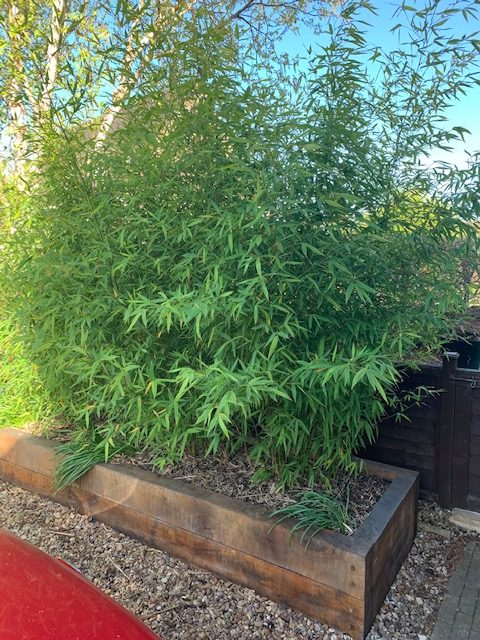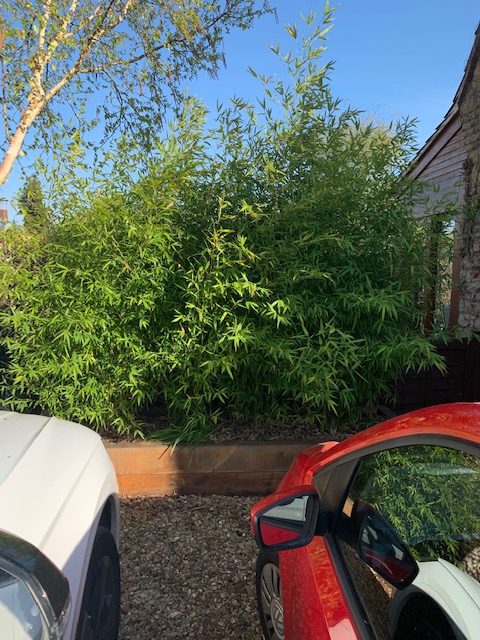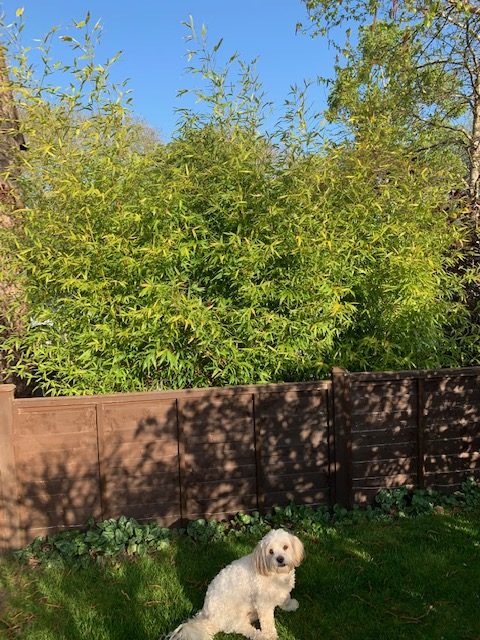How do I plant screening trees for privacy in containers?
This is a question we’re often asked – how can you grow screening trees in containers to create privacy? The simple answer is: trees don’t thrive long-term in pots. But don’t worry — there is a much better alternative that works well in many situations: raised planting beds.



Why Don’t Trees Grow Well in Containers?
Trees are large, living systems with complex root networks. To stay healthy and support a mature canopy, they need access to a large volume of soil. For example:
-
A large tree like an oak or hornbeam may need around 30 cubic metres of soil.
-
Even small trees like a crab apple or Japanese cherry require at least 10 cubic metres.
That’s far more than even the biggest container can usually offer.
When a tree is kept in a container that’s too small:
-
Its roots circle around inside the pot, becoming compacted like a block of wood.
-
The canopy weakens over time and begins to decline.
-
The limited soil dries out quickly, making it difficult to keep the tree watered.
-
In winter, the soil can freeze solid — since it’s above ground and uninsulated — causing the tree to suffer from frozen drought (when water is unavailable because it’s frozen).
All in all, keeping a tree in a small container is a bit like keeping a tiger in a cage — it’s restricting, unsustainable, and not fair on the tree.
But it’s not all doom and gloom, there is an answer!
What’s the solution?
A far better solution is to build a raised planting bed. This approach gives trees a more natural growing environment, while still being suitable for spaces where planting directly in the ground isn’t possible.
Our Managing Director, Mike Glover, faced this challenge himself. He created a raised bed filled with around 4 cubic metres of Barcham Blend compost. The planter was positioned on free-draining gravel, which is important — raised beds won’t work well on hard surfaces like tarmac or concrete, as water can build up in the planter and drown the plants during wet weather.
He also made sure to use a coarse compost mix. Finer composts or loam can compact over time, squeezing out oxygen — but tree roots need both water and oxygen to thrive.
For his screening solution, Mike planted a medium-sized Phyllostachys aurea (Golden Bamboo). Bamboo is ideal for raised beds because:
-
It’s naturally invasive, so it fills out the space well.
-
It provides instant screening from the first day of planting.
-
It can be cut back (coppiced) to ground level in early April and will regrow to over 2 metres within months.
By coppicing every 3–5 years, you can keep your bamboo looking fresh, lush, and dense — ideal for evergreen screening. It also makes it a sustainable choice for growing in confined spaces, as long as your raised bed or planter holds at least 3 cubic metres of soil. The larger the planter, the better the results.
More information about screening
To find out more about planting for screening, and our options for screening trees head to our advice page.
